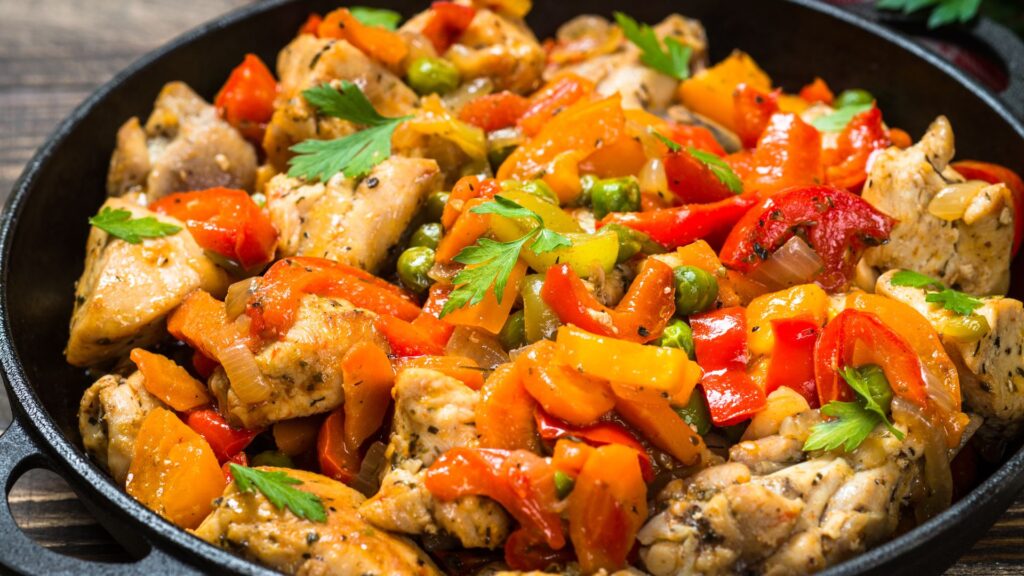Healthiest Foods For Weight Loss
Tired of feeling hungry all the time? Frustrated because the scale isn’t budging? Break free. Get the four most important rules for losing weight, keeping it off, and feeling content all day long.

An Unhealthy Approach To Weight Loss
Counting calories and focusing our efforts on eating smaller portions of American-style, calorie-dense foods usually does not work long-term. Calorie-dense foods are foods that pack a lot of calories into just a few bites, like nuts, potato chips, candy bars, “energy” bars, burgers, croissants, pizza, donuts, muffins, cookies, and anything that’s oily, from olives to regular salad dressing.
For weight loss, counting calories can work against you. All too often, you get up from the table still hungry.
That’s because you stop very judiciously at a pre-ordained number, say, 600 calories, but your stomach may not be ready to stop. At lunch, for example, for those 600 calories, all you’ve eaten is half a ham and cheese panini sandwich and a quarter cup of nuts.
So guess what happens? On the way back to work, still thinking of food, you duck into the ice cream parlor. The fact is: If you’re feeling hungry all day long, if you never get a chance to satisfy your appetite, you’ll probably lose all your good intentions to lose weight.
Sometimes, people become so ravenous that they binge on rich, calorie-dense foods like ice cream, cookies, pizza, and chips. (Sound familiar?) What they’re lacking, quite simply, is satiety.
Best and Healthiest Foods For Weight Loss
The best and healthiest way to lose weight without fighting chronic hungry is to eat foods that provide more satiety for every calorie consumed.
What Is Satiety?
Satiety is the flip side of hunger. It’s getting out of hunger.
But even more importantly, satiety is how long you stay full. Does your meal fill you up, in other words, for one hour? Two hours? Three hours? The longer it “sticks to your ribs,” the more satiety that meal provided.
Meals that provide the highest satiety for the fewest calories will aid weight loss and also long-term weight control because they do not force you to live with chronic hunger.
The Best and Healthiest Foods For Weight Loss Are Foods That Deliver More Satiety Per Calorie
Research has shown that when you get more satiety per calorie, you get full without going overboard on calories. For the most part, foods with a lot of satiety per calorie are:
- Naturally rich in fiber
- Naturally high in water
- Naturally low in calorie density (which means that your calorie intake, per bite, is low).
Unfortunately, U.S. marketers are often selling us the exact opposite – foods that are very high in calorie density. A popular fast food “sausage griddle” breakfast sandwich, for example, has about 100 calories per bite (560 calories in total). And, as we all know, one of these sandwiches rarely quells hunger; we could easily order another one, and another. That’s what happens when your food is dense with calories.
To Get the Most Satiety On The Fewest Calories, Follow These Four Rules:
- Reduce the calorie density of the foods you eat by reducing two main types of foods.
- Dry foods, such as cold cereals, dried fruits, breads, muffins, snack foods like pretzels and even so-called “healthy” snacks like veggie chips and dried green beans. They all pack a lot of calories into every bite you swallow.
- Fatty foods (and we all know what they are) – foods like oils, butter, margarine, cream, ice cream, cheeses, nuts, regular salad dressings, and fatty meat like ground beef.
Especially damaging, very often, are foods that are fatty and dry, like croissants, donuts, scones, pastries, chocolate bars, hamburgers, French fries, cookies, energy bars, granola cereals, cheesy breads, and potato chips. Yes, the majority of just about everything on display in “grab and go” places like 7/11 convenience stores, gas stations, and vending machines.
Because dry and/or fatty foods jam so many calories into each bite, it’s easy – real easy – to go overboard on waist-expanding calories before you begin to feel any sense of fullness.
2. Don’t drink your calories
A number of studies have shown that, compared to low-fiber foods, high-fiber foods consumed at breakfast or lunch can significantly reduce food intake at the next meal.
One way to eat more high-fiber foods is to have fun experimenting with new fruits and new vegetables, and add more beans to your diet. Beans, such as pinto, black, and garbanzo beans, are super fiber-rich. At the grocery store – or even while dining out – try a new fruit or vegetable each time. Add beans, peas, or lentils to soups, salads, pasta dishes, and stir fries. You’ll never get bored and the extra fiber they provide will leave you in a satiety state even longer.
High-fiber foods tend to be foods that require a lot of chewing. That’s a good thing. The more you chew, the more satiety you get.
A question you can ask yourself before eating something (say, a hot fudge sundae) is: “If I had no teeth, would consuming this food slow me down?” If not, you can bet that food is fattening!
3. Increase the amount of fiber per calorie
Studies have found that foods with more dietary fiber tend to make people feel satisfied longer than foods with less dietary fiber.
A lunch that is high in fiber like this veggie stir-fry with beans can significantly reduce your food intake at the next meal.
4. Eat only when hungry. (Don’t stuff and don’t starve.)
A meal or snack provides more satiety if eaten when you are hungry than when you are not.
During a meal or snack, it is important to listen to your body. Stop eating when you are no longer hungry. People who eat when they are not hungry almost always choose foods with very little satiety per calorie, and these are the most fattening foods to eat.
It is also important to not fight hunger. You don’t want to go hungry for long periods of time. Starving yourself can all too easily lead to binges.
But learn not to confuse a craving for a salty, fatty, or sugar-rich food for real hunger.
If you’re not sure if you’re hungry or not, ask yourself: “Could I eat a plain baked potato or an apple right now?”
If you could, you’re hungry.
But would you ever eat a plain baked potato for your after-dinner dessert?
Eating a dessert full of sugar and fat and washing it down with a dessert wine or coffee with cream and sugar would violate all four of the above rules for successful weight loss at a single meal. The more of these four rules you ignore on a regular basis, the harder it will be to not only lose weight but keep it off.
Exercise
Finally, though this article is about the healthiest diet for weight loss, weight loss likely won’t happen unless you’re combining your healthy, low-calorie-dense, food plan with regular exercise.
Contrary to popular belief, walking several miles a day will not increase your appetite to any great degree. Walking several miles daily is, in fact, a win-win situation. Your appetite will stay pretty much the same, and you’ll burn several of the calories you are eating, both of which translate into successful, long-term weight loss.
However, doing a lot of exercise (bouts that burn more than 500 to 600 calories) will certainly increase hunger. You’ll burn more calories, but you’ll eat more, too.
Finally, exercise alone (no change in diet) may help people lose 10 to 20 pounds; but to lose a lot of weight, most people cannot succeed with exercise alone. You have to change what you eat, too.
And, of course, no amount of exercise makes up for a lousy diet. We don’t care how long you jog in the morning if you do what Bill Clinton used to do and stop off at a fastfood restaurant chain for an Egg McMuffin. This plan won’t produce weight loss. It will produce heart disease.
Healthiest Foods For Weight Loss | Bottom Line
If we try to lose weight by restricting calories and depriving ourselves of stomach-filling foods, we’re headed for trouble. Hunger kicks in, undermining our best intentions. Hunger almost always wins. And when it doesn’t, people can starve to death; it’s called anorexia nervosa.
For permanent weight loss without hunger, follow two key strategies:
- Exercise daily, and
- Get the most satiety on the fewest calories by following the four rules in this article.
The best and healthiest foods for weight loss are naturally high in fiber and water, and naturally low or moderately low in calorie density, and include:
- Fruits
- Vegetables
- Potatoes
- Sweet Potatoes
- Cooked Whole Grains, such as whole-wheat pasta, brown rice, quinoa, and oatmeal
- Legumes, such as peas, lentils, and beans like pinto, garbanzo, black beans, and red beans
- Plus, prudent amounts of nonfat dairy foods and lean animal foods, mostly fish
All the above are the foundation of the Pritikin Eating Plan.
They’re the healthiest foods not only for weight loss but for your body in general. Do you want to live to 90 and beyond? Do you want to keep doing all the things you enjoy doing in your 60s, 70s, 80s, and 90s?
Stack the cards in your favor. Start today. Embrace a healthy food and fitness program like Pritikin.
Extend those Golden Years for years and years.
